
Most of us have heard of the term rotator cuff before, but the truth is, there’s no actual cuff in any region of the shoulder. The “rotator cuff” is a group of four muscles that includes the supraspinatus, infraspinatus, teres minor and subscapularis. Teres minor, the smallest of the muscles, is the junior co-worker to the infraspinatus and they can be found right next to each other. The teres minor originates on the upper two-thirds of the lateral edge of the dorsal surface of the scapula and inserts to the back of the greater tubercle of humerus – the capsule of the shoulder joint.
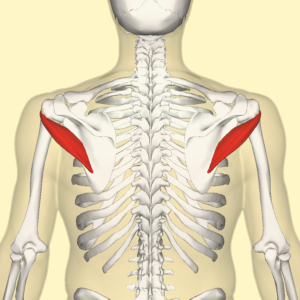
The teres minor and the infraspinatus are king and queen of keeping the shoulder joint from upward dislocation and facilitate external rotation of the humerus. As someone who often had dislocated shoulders growing up and continually deals with tender deltoids I wasn’t surprised when a recent body worker (masseuse) was flabbergasted by the amount of trigger points located in my teres minors. The muscle is petite in size and isn’t at the top of our list of distressed muscles that need our attention. With that said, trigger points in the devious muscle can be masked as shoulder bursitis, the symptom being deep pain in the shoulder, and can also make the deltoids feel sore. As of recently, I’ve been treating my deltoid, but neglecting the source of the problem – the teres minor.
There is an upswing to all of this. The teres minor is relatively easy to access and relieve through shoulder self massage with Yoga Tune Up® Therapy Balls. It can also increase the flexion and external rotation of the shoulder joint once you release this cramped muscle, which can come in handy when you snuggle into that comfy sweatshirt from college, wrangle into that cute new jacket or grasp for the heavy pot that is stored on top of your refrigerator. Get rolling!
Check out the Yoga Tune Up Therapy Ball Products
Get solutions for your shoulder pains
Watch the QuickFix Shoulders Video Online


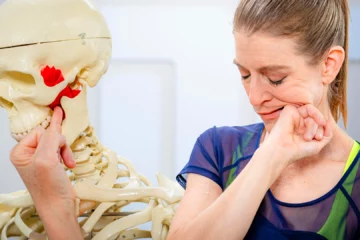
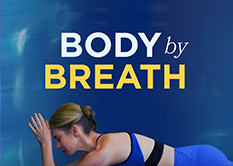



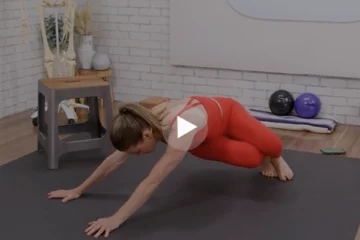
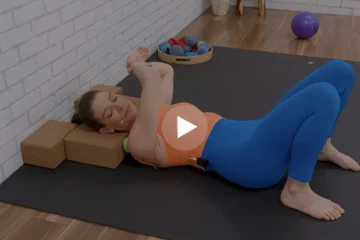


Thank you for the clear explanation anatomy and kinesiology as well as the particle context for how understanding this and having healthy shoulders is important (putting on a sweatshirt)
Thanks you for this post! My first injury as an ultrasonographer was bursitis many years ago and I have only recently learned more about this key muscle with shoulder external rotation (the position I now love to live in!)
Until two days ago I thought that rolling out my middle deltoid would help release the deep pain I had been feeling in my upper arm. Then I discovered that one of the trigger points for the teres minor and infrspinatus was located right in the middle deltiod muscle. When I stared rolling, Wow those muscles were so sensitive! Using the wall to limit compression has helped a great deal.
I think there is a lot of misconception about what the rotator cuff is– this article does a great job explaining it! So often I blindly hear people referring to it without any idea of its actual function and what comprises it.
I like this article about the teres minor. The picture is also helpful in finding where exactly on the scapula it originates and then inserts on the greater tubercle of the humerus. It’s crazy how those rotator cuff muscles attach on the outside AND inside of the scapula!
Oh many of us get that little teres minor in trouble… as we spend numerous hours sitting in “T-Rex” position ( spine flexion protration of the scapula internal rotation of the shoulders 90* flexed elbow ) we push the upper back muscles (rhomboids, infraspinatus and teres minor) to remain long and passive. No wonder why when you put the ball there so many of us get pain faces … let get rolling , let get moving !
I just started using the therapy balls and never knew how tender the Teres Minor can be! I was amazed at the difference I felt when I rolled out one side before I got to the other side.
I am glad that you started the blog with the statement that the rotator cuff is actually not a cuff. Too many people do not know this! Thanks for sharing on the teres minor… the junior co-worker of the infraspinatus ( cute) It is one sensitive little muscle when irritated!!! I know I need to roll it out but man it hurts!!! Must do it against a wall before doing it on the floor again!
Chad – I am so happy this article allowed you to connect your body’s history with your present pain patterns. This work is truly rehabilitate and allows us to become the experts to our own bodies. Great job!!
Thank you for all of these lovely, well thought-out posts…to answer Julie – you are most likely getting a ride along benefit of rolling out the infraspinatus, too. There is an image a little down on this page, http://wellpracticedpitchingmotion.weebly.com/muscles.html that is a great depiction of where the teres minor is in relation to the infraspinatus. It can be quite challenging to truly isolate one muscle when rolling, which is not a bad thing at all.
Personally, I don’t have referral pain in the deltoid when rolling the teres minor. Referral pain is common and every body is very different. The best thing to do is listen to the feedback your body is giving you and explore and discover your tight, tender places and slowly unwind them. Good luck and let me know if you have any other questions!
Thanks for the post! Do you find that there is a “pain” sensation that transfers into the deltoid when rolling the Teres Minor?
I felt this pain when I was rolling what I thought to be my infraspinatus but after reading your post, I wonder if it was in fact my teres minor and that this is a common occurance. I would love to hear your thoughts.
A very welcome YTU ball trigger point iradicator. I feel a greater expanse in my external rotation and can’t wait to give it to my senior clients .
Thanks for sharing this. It’s incredible how this little workhorse is so undervalued or known by the general public. I just had a major revelation while reading this post. Whenever I roll my teres minor out I have incredibly strong sensations. I made the connection of why. I played soccer for 12 years in my most formative years, and throwing the ball inbounds to continue play repeatedly during games and practices may in fact be my personal culprit.
The “King and Queen” – I like that description for the Infraspinatus and the Teres Minor. When I’m using my YTU Therapy Balls on my shoulder rotators, the Teres Minor is usually the most tender – which tells me it’s a hard working muscle. 🙂 Thanks for sharing!
Wonderful Stephanie, the easy way you explain that, I had a shoulder injury sometime ago, but I’ll probably roll my Teres minor and see what happen. For sure I’m going to improve the movility in my shoulders and reestablish theri health.
Great post! I just learned how to use the yoga tune up balls to roll out the infraspinatus and was shocked how tender it was. I am excited to use the balls to decrease the sensitivity of this muscle!
Thank you for sharing your story and illuminating the role the teres minor might play in shoulder pain. It makes sense that the teres minor and surrounding connective tissue might become overprotective in trying to stabilize the joint. Hmmm. I wonder if the teres minor is the culprit in the ‘frozen shoulder’ diagnoses that many of my clients with chronic pain come in with. Especially with my older clients in their 70s, they seem to have absorbed the message from their healthcare providers that because they currently have shoulder pain and limited range of motion, there is a foregone conclusion that they will never be able to move their shoulders again. I suspect that there are some ageist assumptions at work here. I am really troubled by the idea that any of us might lose mobility unnecessarily. I am eager to learn more about how the YTU balls can work with fascia in areas that have been deemed immobile for years.
I had never heard of the Teres Minor until a few days ago (during my YTU Level 1 Teacher training), and suddenly I am accutely aware of how neglected it has been! Internal rotation is something I struggle with and I know a lot of other people do, so it was great to hear a bit more about about the muscles that typically play a role in this problem. Thanks!